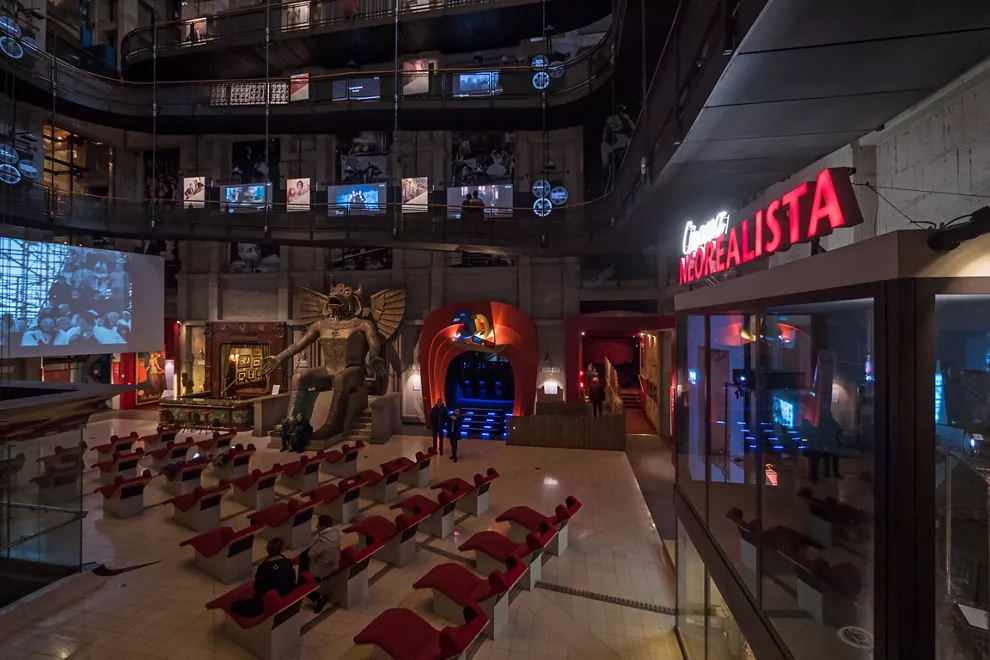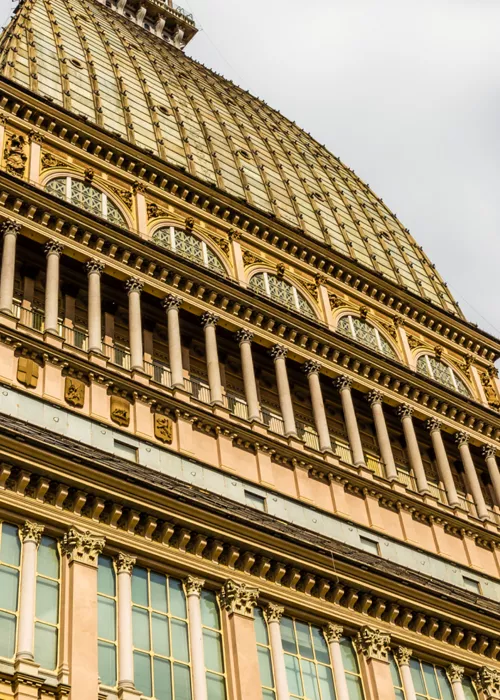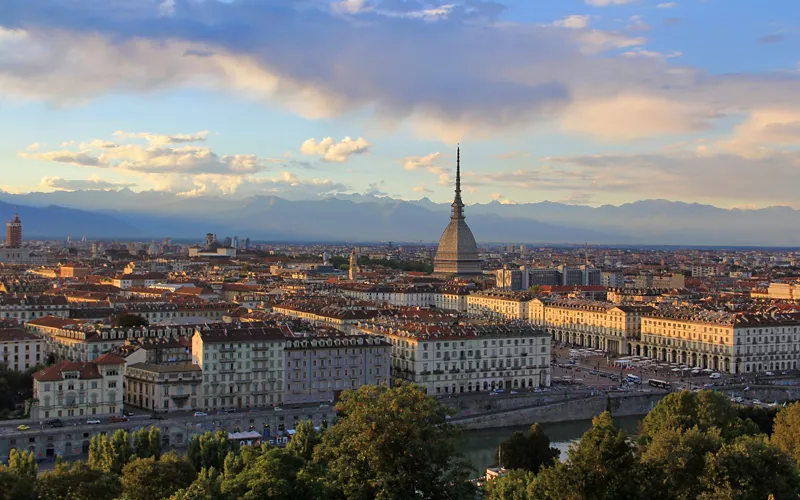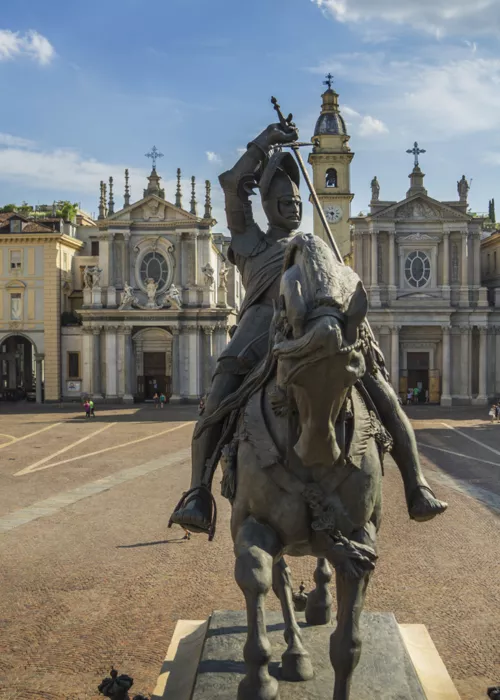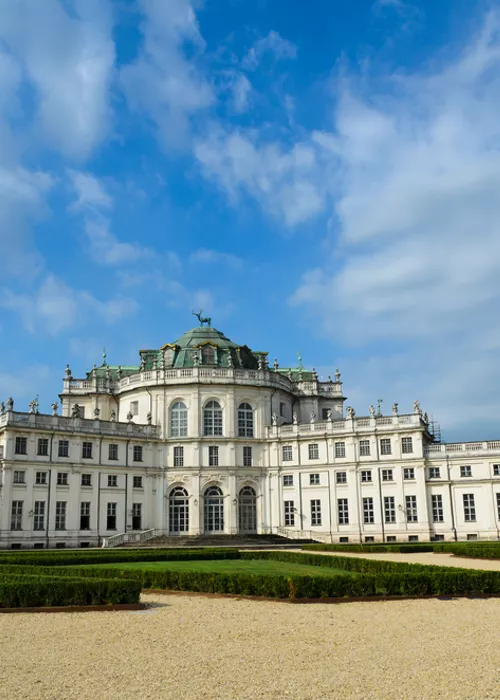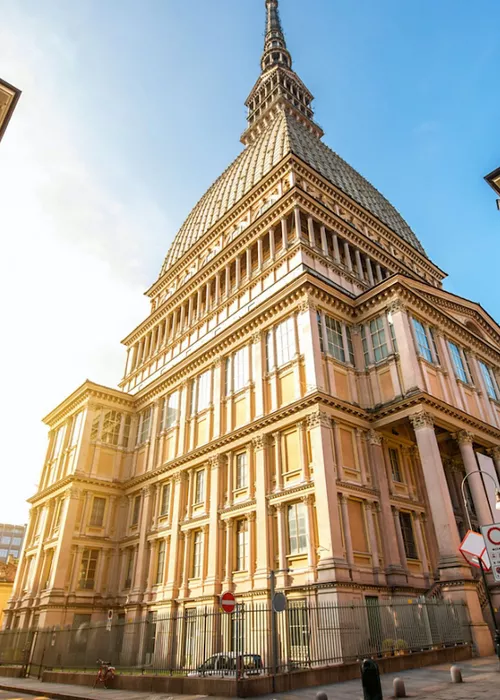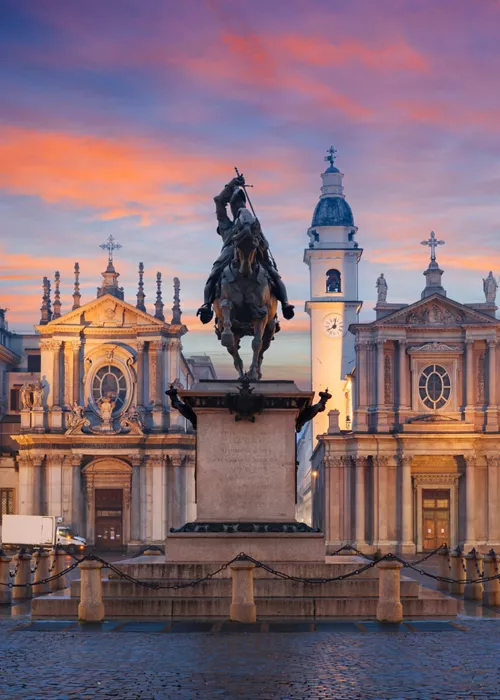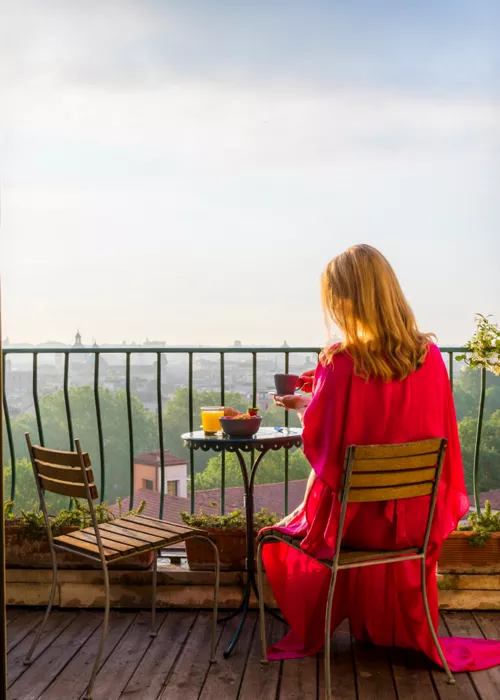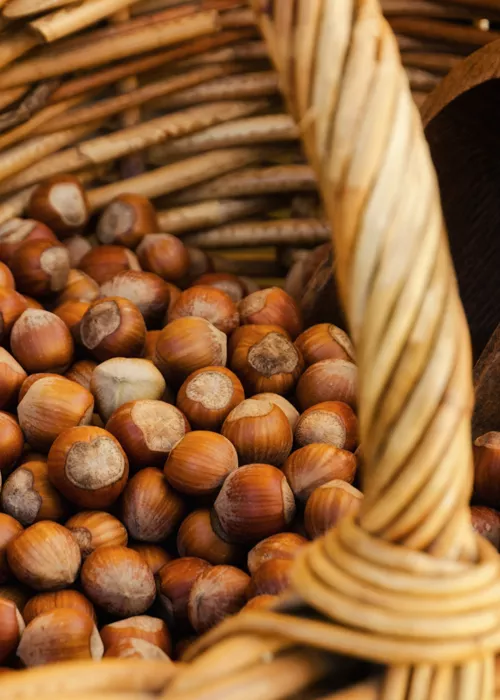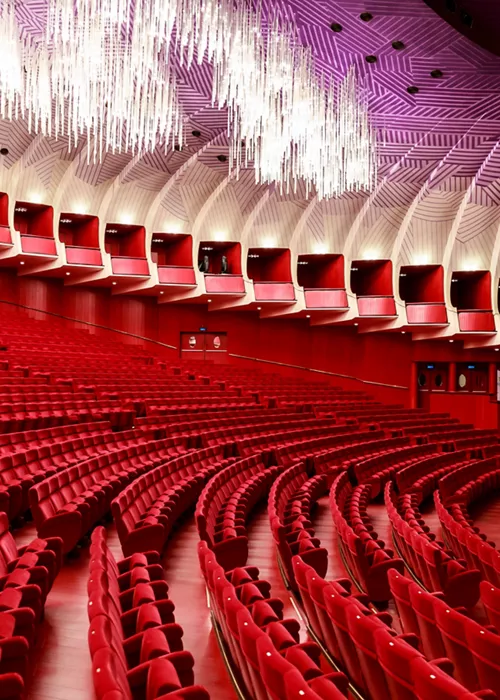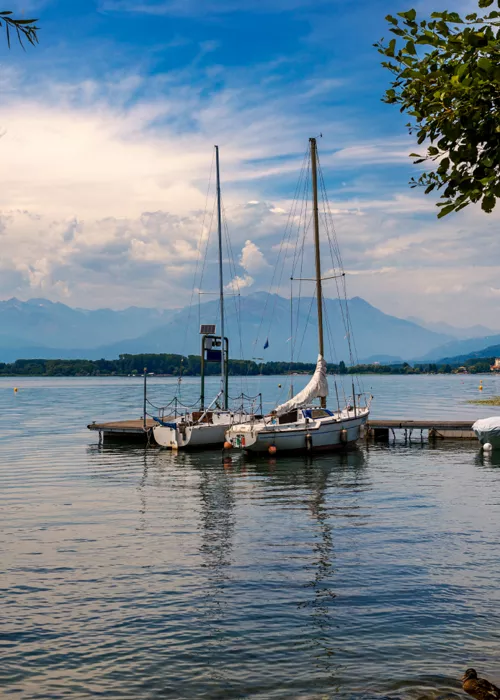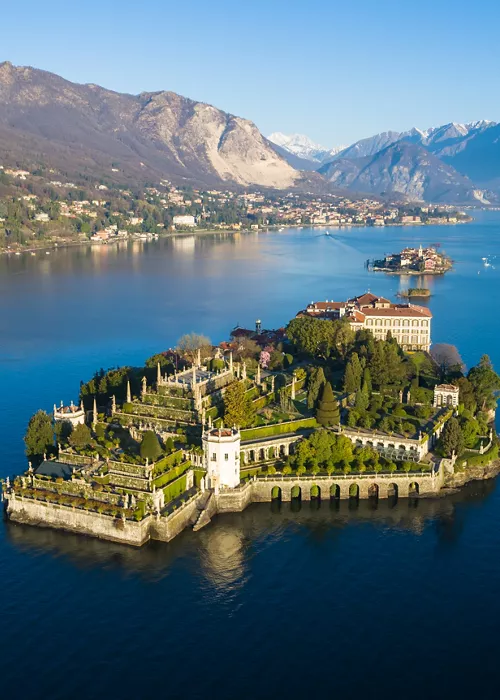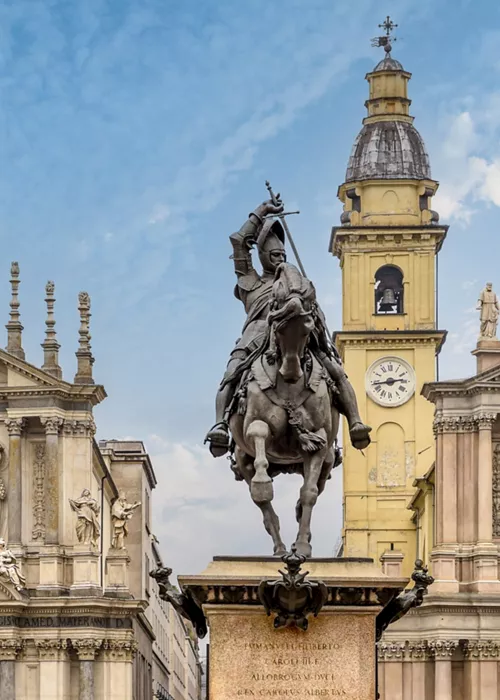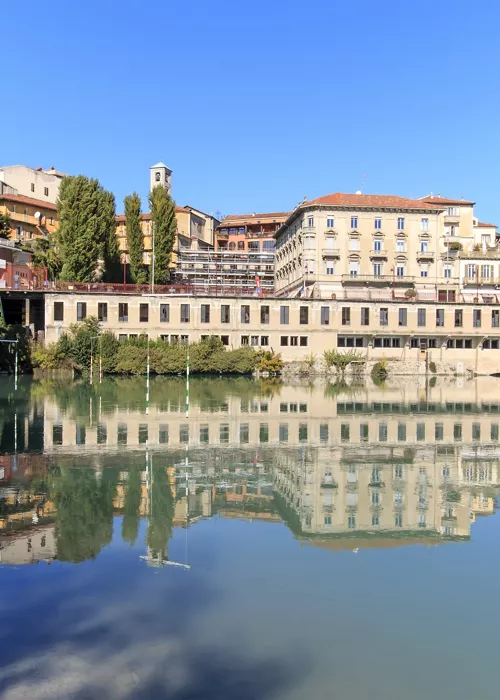In Turin, in the National Museum of Cinema, a jewel inside the Mole Antonelliana
3 minutes
The National Cinema Museum in Turin celebrates and narrates the seventh art in detail. It is located inside the scenic Mole Antonelliana, a symbolic monument of Piedmont's capital city, and follows the history of the film industry from its origins to the present day.
The History of the National Cinema Museum
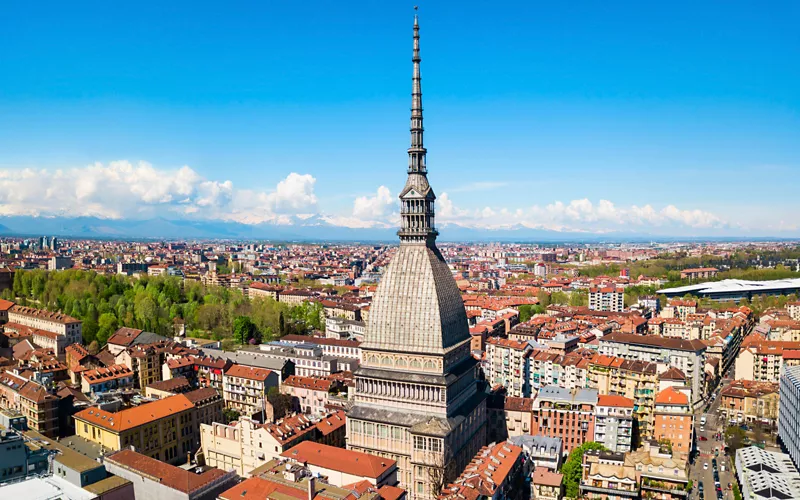
On display are 1.8 million items including films, photographs, equipment, posters, documents, sound recordings, books and records. The material is organised along the lines of film archaeology, photography and film history. The exhibition is so comprehensive that it can be considered among the most important in the world for the richness of its heritage and the various activities on offer.
Also remarkable is the almost entirely interactive layout. It spirals upwards on several exhibition levels.
The first museum construction project dates back to 1941, thanks to Piedmontese history and film scholar Maria Adriana Prolo, who worked on the idea for a long time.
The first financial contributions came with the support of some of the pioneers in the sector, such as the Asti director Giovanni Pastrone, who directed the colossal Cabiria in Turin, and film critic Francesco Pasinetti.
From there, came the first memorabilia and themed historical documents, stored in a room of the Mole Antonelliana granted by the City of Turin. The idea of creating a museum came to the fore around 1953, but the museum building was not inaugurated until 1958.
The Museum today is a non-profit organisation, which became a Foundation in 1992 to promote study, research and documentation activities in the fields of film, photography and image.
A visit to the National Cinema Museum
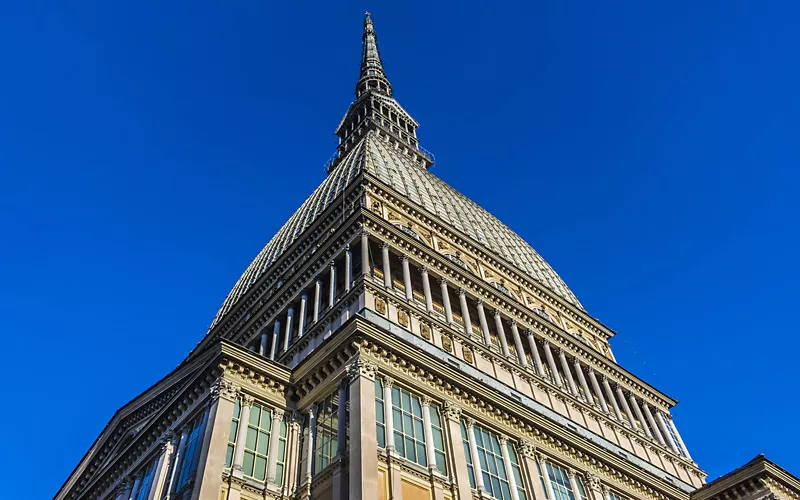
Beginning with a floor dedicated to theArchaeology of Cinema, where no fewer than eight themed areas can be visited. These allow first-hand experience of optical shows and the first devices used. The heart of the permanent installation is the Temple Hall, with exhibition areas dedicated to the great genres of film history. Then there is a section dedicated to the Italian silent film masterpiece, Cabiria, and one on Turin as the city of cinema.
From here there is a twisting spiral ramp that unwinds towards the dome, a path where temporary exhibitions are often held. From above you can enjoy the very impressive view of the hall.
The Cinema Machine is the section that delves into the different components of the film industry: from the production studios to the director, from the screenplay to the actors , up to the costumes, set design and the cinema itself.
Here, is the Poster Gallery which traces the history of cinema, the most important films and authors.
A hub of cultural initiatives with an international scope
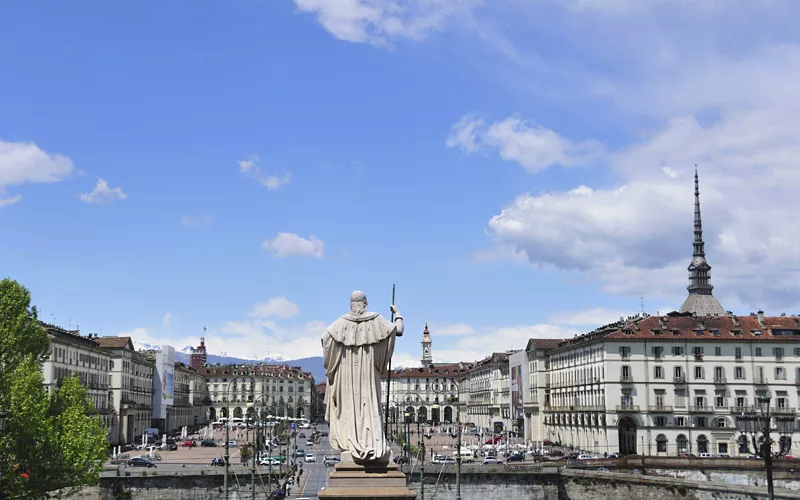
The National Cinema Museum has, as its mission, cutting-edge research into the preservation of materials and the history of cinema and offers an extensive programme of restorations, publishing initiatives, film festivals and meetings with authors. Its focus with schools is on specific educational programmes.
A unique view of the city
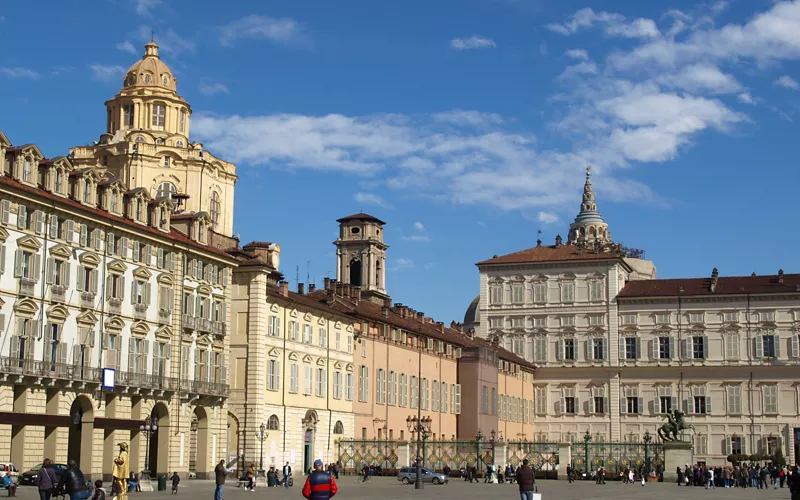
A visit to the National Cinema Museum in Turin is also a unique opportunity to see the city from a truly priceless perspective. At the centre of the Mole Antonelliana is a scenic lift that will take you to the top in less than a minute, giving you a breathtaking view.
Fun fact: on the walls of the dome of the Mole Antonelliana a sequence of lights by Mario Merz entitled The flight of numbers was mounted. It represents the beginning of the Fibonacci seriesand is a representation of symbolism in architecture and arithmetic.

